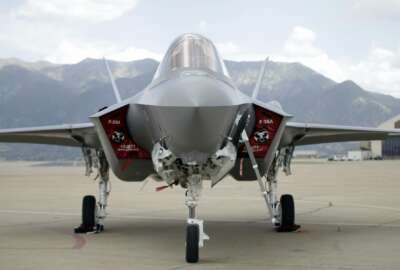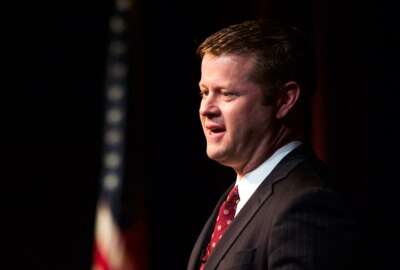Air Force planning project to cut extraneous S&T programs
The Air Force will take a comprehensive look at its science and technologies projects for its 2024 budget to see which it will try to take to fruition, and which...
The Air Force will take a comprehensive look at its science and technologies projects for its 2024 budget to see which it will try to take to fruition, and which will be getting the ax.
The budgeting process is reminiscent of the Army’s cutthroat Night Court process, which reprioritized billions of dollars in the service.
Instead of looking throughout the whole service, though, Air Force Secretary Frank Kendall said Tuesday at the Air Force Association that the process will focus on nascent technologies.
“You have to be disciplined about the things you start,” Kendall said. “I’ve seen a few projects, I’ll be blunt, that I don’t think are ever going to go to the field whether they’re successful or not. I’ve seen a few others that are almost certainly going to the field if they are successful. We need to distinguish those two, and we need to emphasize the ones who are in the latter category.”
The culling is in contrast to some of the work the Air Force and Defense Department have done in the past five years, when they put many companies on contract to build prototypes or flesh out ideas. The Air Force famously did Pitch Days, where it put small, nontraditional companies on contract within hours of them presenting their ideas.
That isn’t to say those days are over, however, it seems that Kendall wants to clean up some of the budget for more important technologies that will actually mature.
Kendall said he will be looking at demonstration projects to see if they are cost effective and affordable. He will also decide if they offer an operational advantage.
“We’re going try to do some sorting, if you will, to make sure we’re focused on things that have the highest payoff,” Kendall said. “In a world in which we were, by far, the dominant military power we could afford to have 1,000 flowers bloom. We can’t do that anymore. We’ve got to focus our efforts on the things that we really need or that are going make the greatest difference on the battlefield.”
Kendall said the programs he’d like to see go are ones where a company sees opportunity, but didn’t necessarily think through all the implications of doing it operationally.
“There are some things where I think we’ll say that is clearly a good idea, we’re going to make sure that’s fully funded in the five year program and we’re going to make sure we get on a path to fielding,” Kendall said. “There are others where we’re going to want to go do some more analysis and say, ‘This looks like it might be a good idea, but I’m not quite sure about the cost effectiveness, so let’s do some analysis to check that out.’ There are a few others where we may just say, ‘Even if you succeed, when this is not going to make the cut.’”
Copyright © 2025 Federal News Network. All rights reserved. This website is not intended for users located within the European Economic Area.
Scott Maucione is a defense reporter for Federal News Network and reports on human capital, workforce and the Defense Department at-large.
Follow @smaucioneWFED






